1. NOTRE-DAME-DE-LA-NATIVITE CHURCH
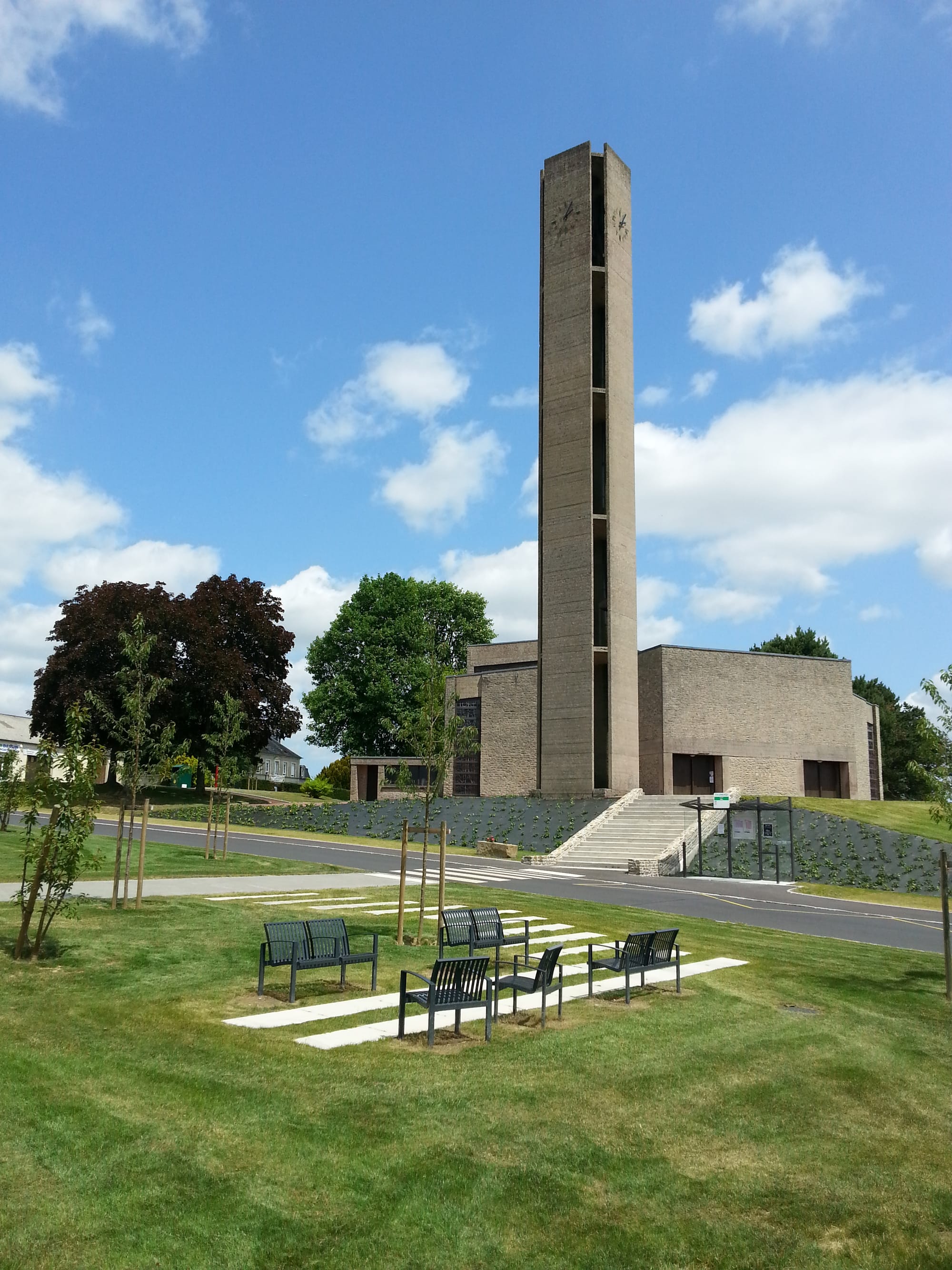
The old church was of a classical style from Bocage Normand. According to Arcisse de Caumont "The oldest part of the church of Cahagnes is the nerve, but it presents nothing of interest, and I do not believe that it dates back to a date prior to the beginning of the 14th or the end of the 13th century". Destroyed during the fighting on June 28, 1944, it took more than 20 years for the village to have a new church. But why such a long time?
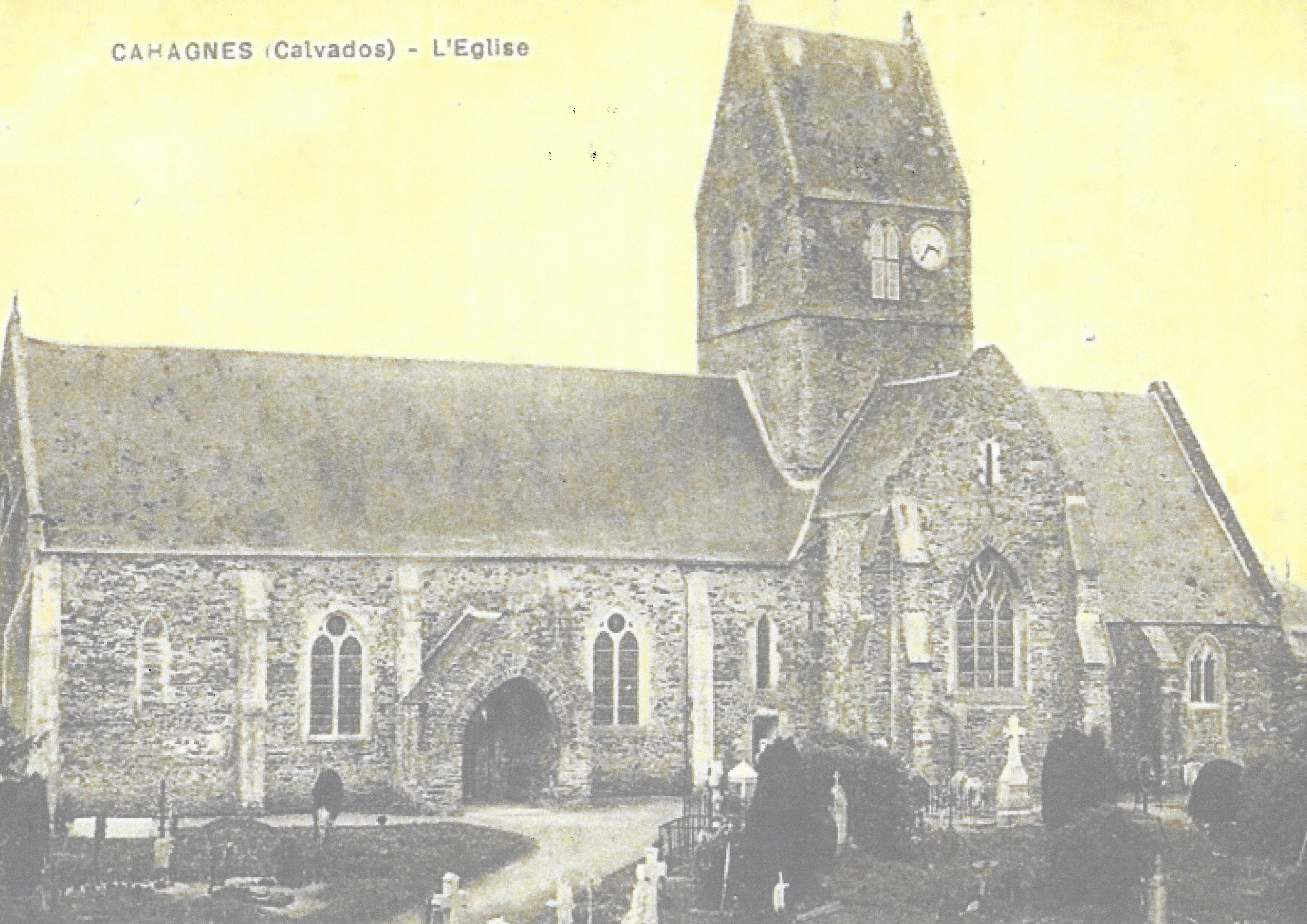

Destruction of the church
Cahagnes was on the front line for a month and a half, from June 13 to July 31, 1944. The church bell tower was a good hangout for the English artillery, located at Caumont-l'Eventé. So the Germans blasted the building on June 28, 1944 with English... ammunition.
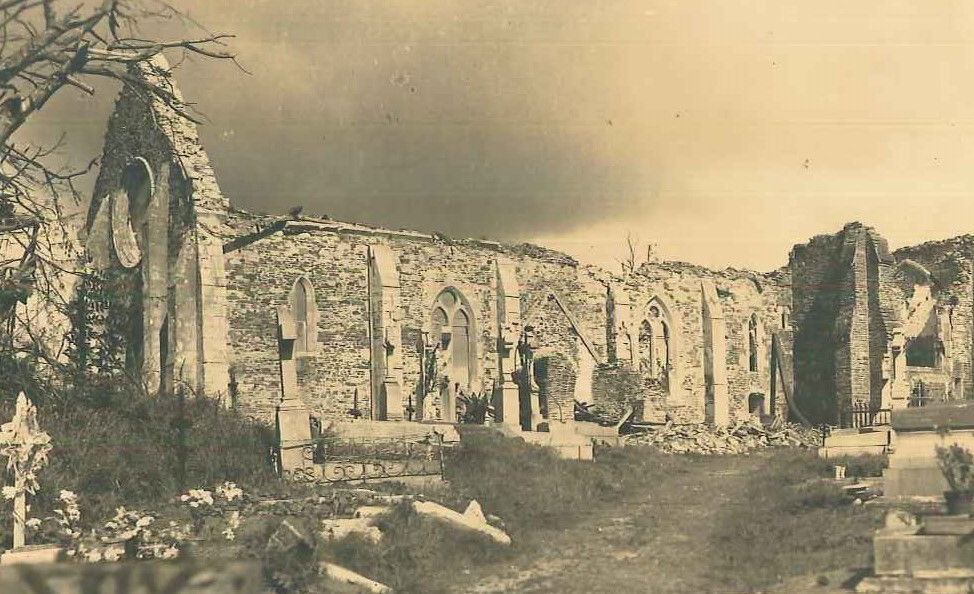
A provisional church
From 1944 to 1966, a temporary church, first in an agricultural shed in the village of Cahagnes. In 1946 in a shed, "Romney", which all residents will call the barrel, is installed. On March 25, 1951, the bells were installed in the belfry. This provisional church will serve until 1966, that is for 22 years. It will have marked an entire generation.
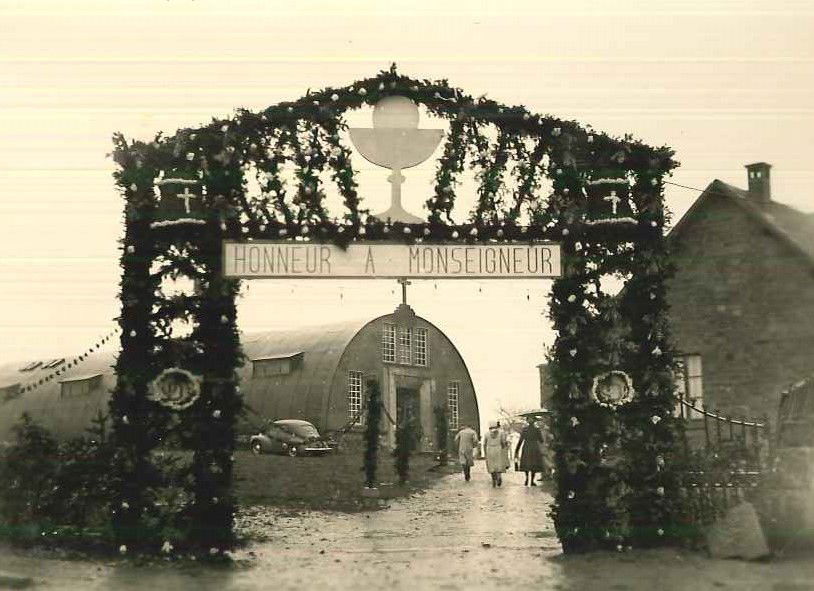
A 14th century church
It is a common architecture in the Bocage Normand of the same period. The church resembles that of Saint-Georges-d'Aunay. A church to which the inhabitants took care: bell, clock, vault, roof filled or redone. In 1936, a loan of FF 9,000, repayable over 30 years, was taken out. The organ was renovated and Marcel Dupré, grand master organist, gave a concert for its inauguration on September 13, 1942. This concert is a real event for the municipality.
First, in 1947, the mayor chose a local architect who proposed a classic plan. Then the diocese created the diocesan cooperative for reconstruction in 1948. The commune joined in 1949. Canon Lecoq, at the head of this cooperative which is now in charge of the project, will drive the novelty in Bocage. The new architectural current in force is adopted by the cooperative. It aims at modernity, both in materials and in design. The building banishes all spectacular aspects and causes the Christian to focus on spirituality. With this in mind, the cooperative imposes a Swiss architect: Hermann Baur. It is renowned for the construction of modern churches in the line of avant-gardists like Lecorbusier. Then began a series of setbacks and difficulties that delayed work throughout the 1950s. First of all, Hermann Baur proposes an ambitious project. He will always have difficulties to respect the amount of war damages. Several reductions, such as the height of the walls, or abandonments, such as the gallery or the organ, will have to be written to respect the envelope. It is the relay of Hermann Baur in France, Simon Vermot, architect in Houlgate, who ensures these comings and goings. Other difficulties, the architects responsible within the Ministry of Reconstruction did not look favourably on a foreigner, of Alemannic origin in addition, rebuilding the French churches... Finally, the prefect decided and the building permit was issued in 1962. Construction can finally begin. The church will be consecrated on September 18, 1966. It is registered as a historical monument by order dated July 8, 2010.
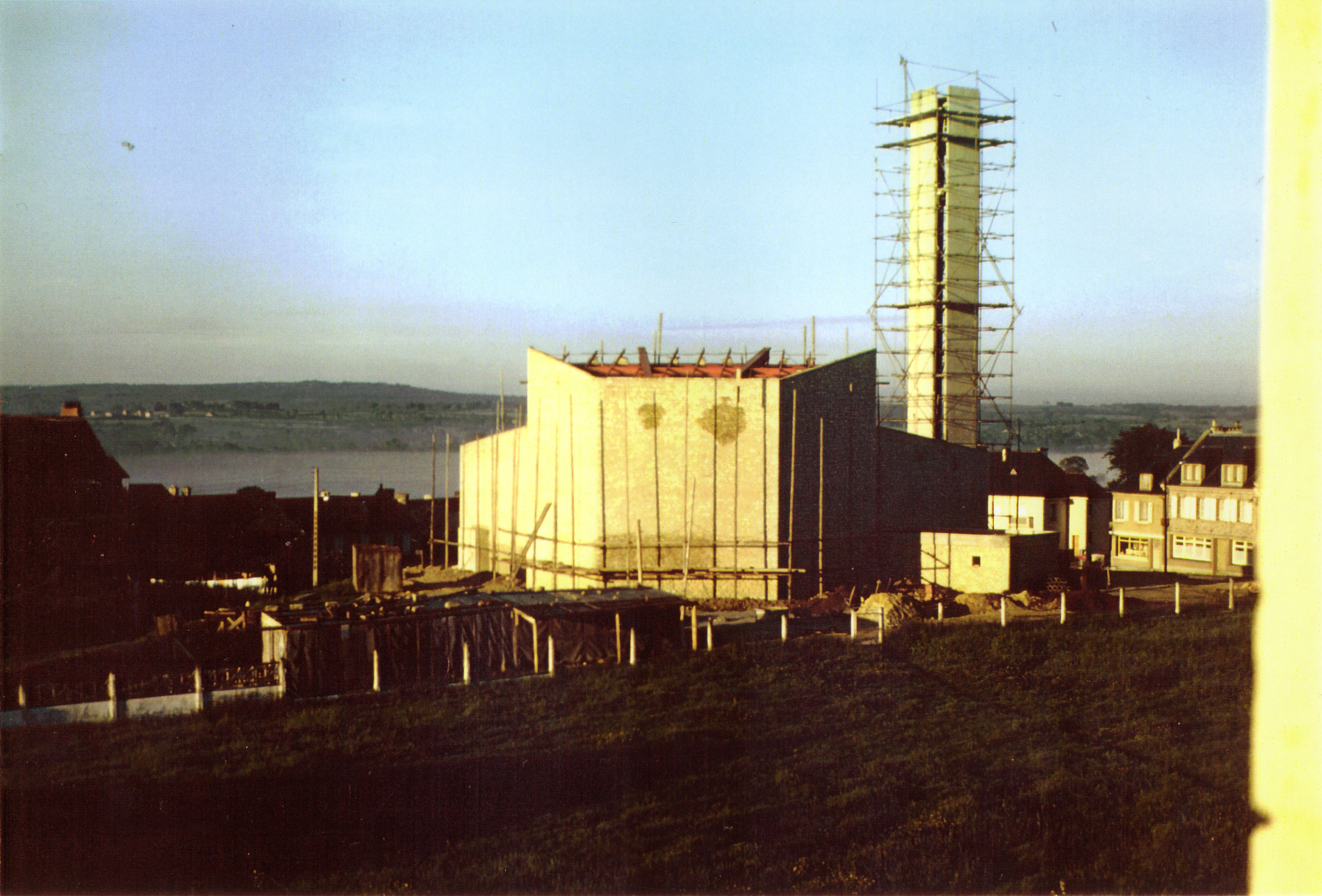

The interior of the church is fan-shaped and the altar is arranged for the ministry to face the people.
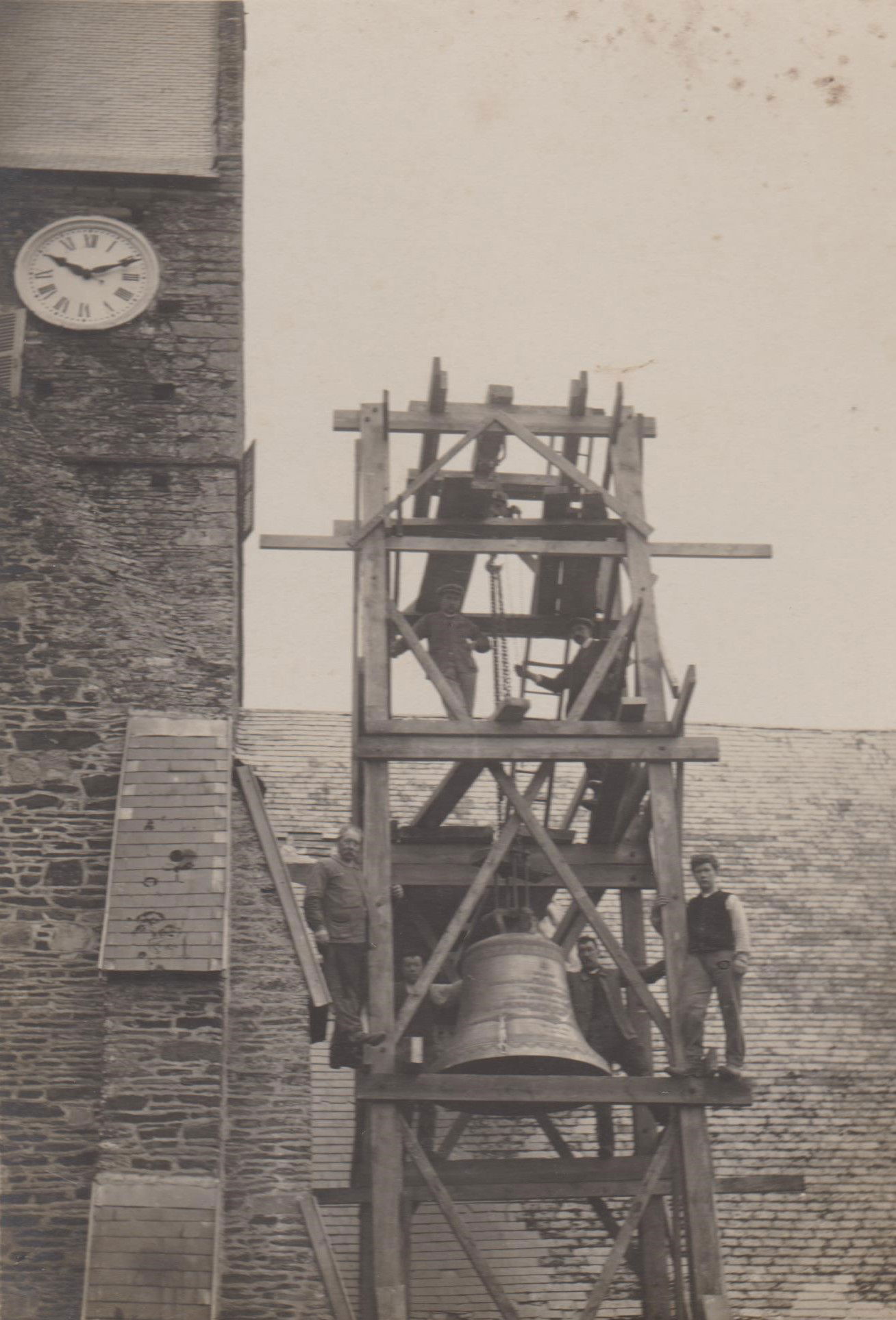
Installation of the bell.
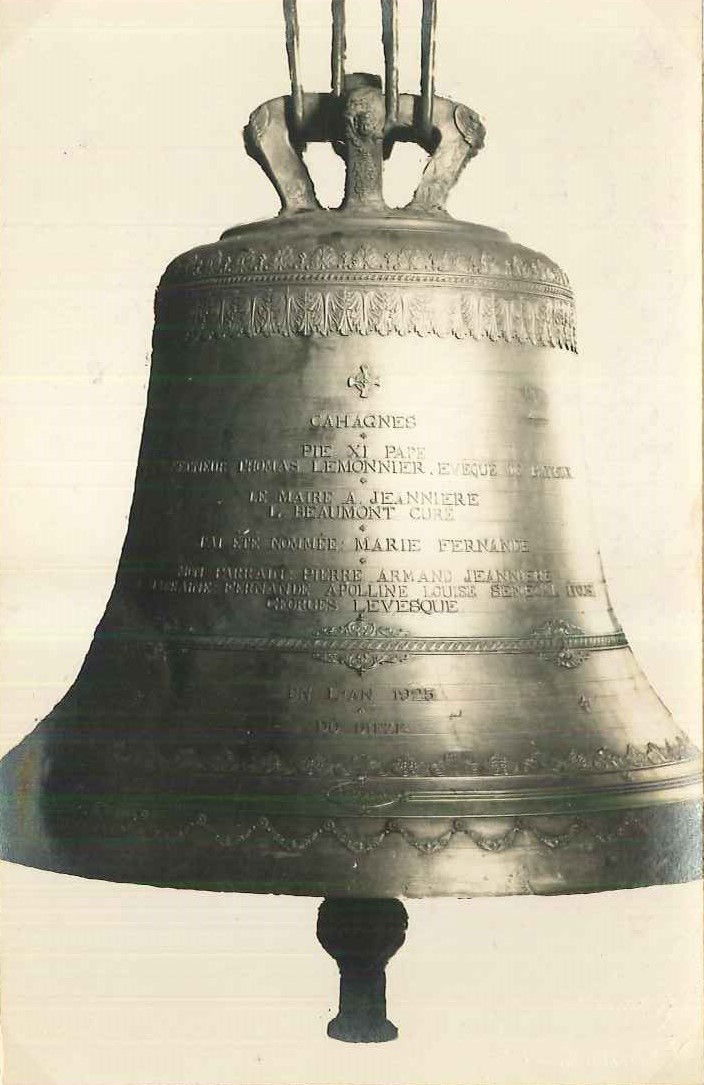
Marcel Dupré: organist. Inaugurates the restored organs of Cahagnes on September 13, 1942. Born in 1886, his family is a musician. At the age of eight, he played in public, for the inauguration of an organ in Elbeuf, the prelude in E minor by Johann Sebastian Bach. At the age of eleven, he became the owner of the great organ of Saint-Vivien in Rouen; he was a gifted man. In 1914, the cantata Psyché earned him the first Grand Prix of Rome. He became the owner of the great organ of Saint-Sulpice. His fame continued to grow until 1939, when he toured the world giving 40 concerts in Australia and 60 in the United States, Canada and Europe. He directed the Conservatoire de Musique de Paris from 1954 to 1956. In 1956, Marcel Dupré was elected to the Académie des Beaux-Arts. His considerable work gave him a universal reputation, and his improvisational talent was recognized everywhere in the world. He died at 85 in Meudon in 1971.

François Chapuis: master glassmaker. Installed the stained glass windows in the church of Cahagnes in 1966. Born in 1928 in Nancy, he is also a painter and sculptor. He studied at the Ecole des Beaux-Arts in Nancy and attended the Centre d'art sacré in Paris. He is the author of stained glass windows and stained glass windows for many provincial and Parisian churches. It is in line with the important movement of the renewal of sacred art and religious architecture after the war. His name remains mainly linked to an original concept, the "wall-light", which he invented in the 1960s. He died at the age of 74 in 2002
